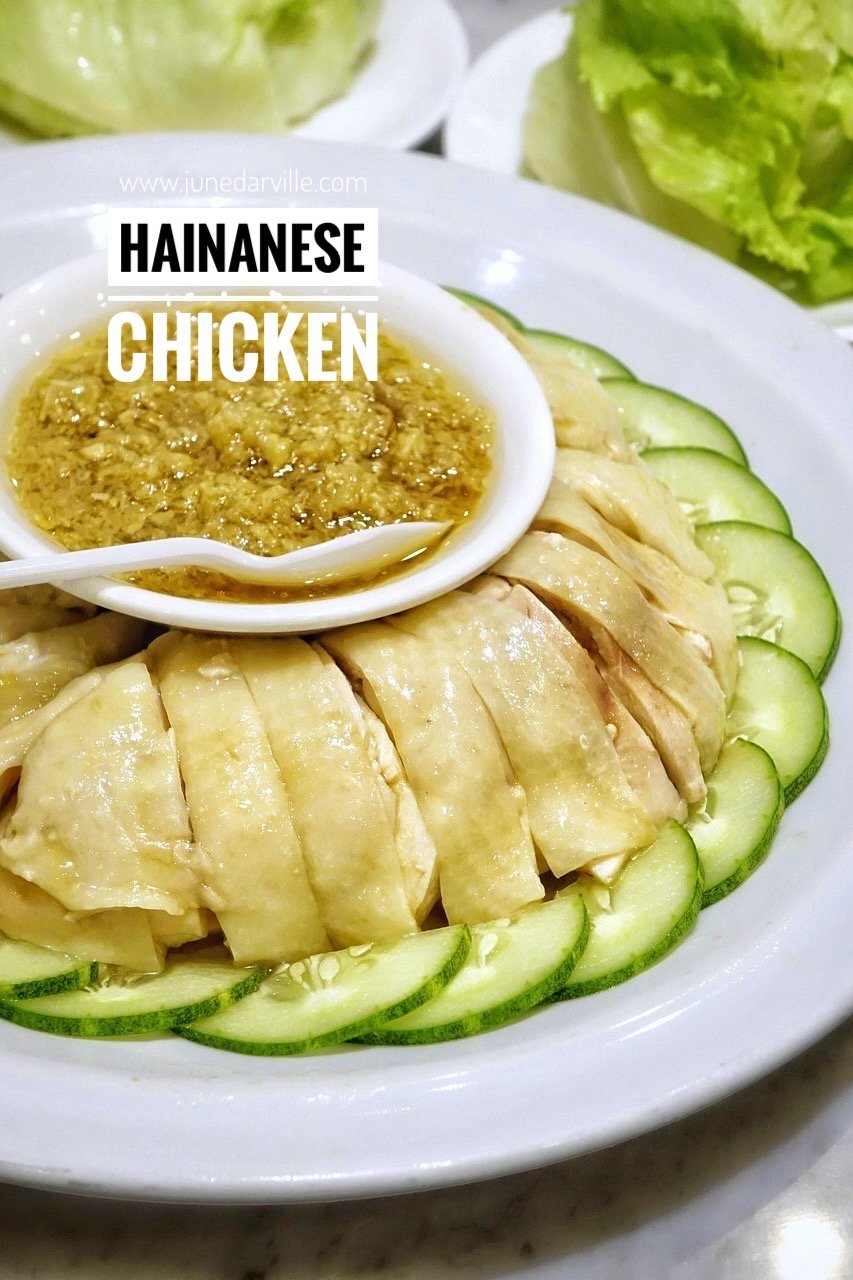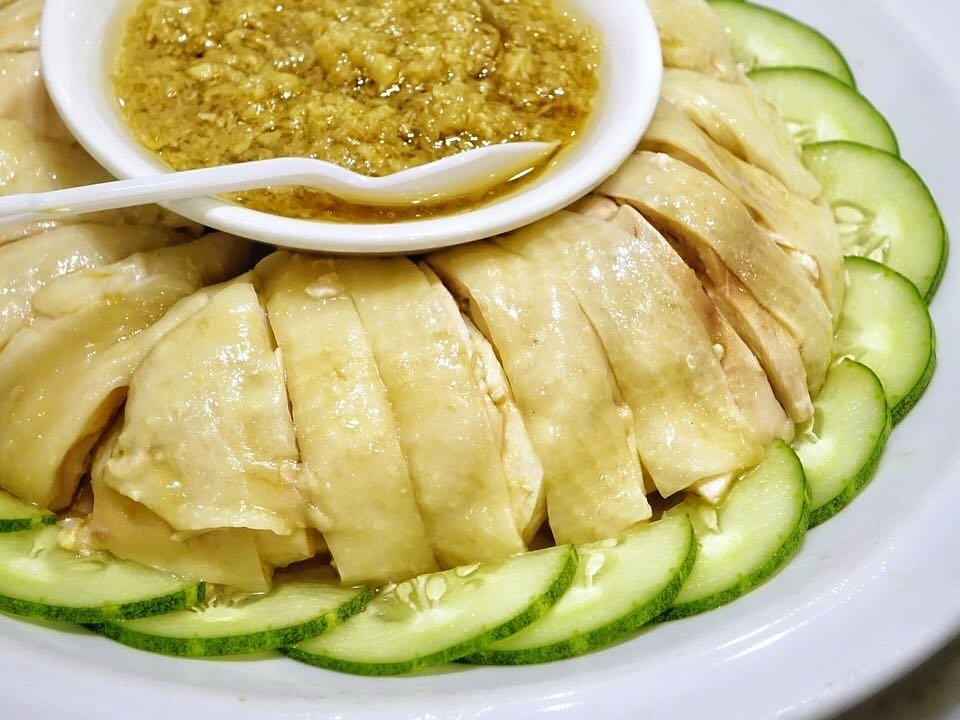 Hainanese chicken rice is one of Southeast Asia’s most beloved comfort foods. It is deceptively simple: poached chicken, fragrant rice, and a trio of sauces. But behind its clean presentation lies a rich history, cultural migration and culinary finesse.
Hainanese chicken rice is one of Southeast Asia’s most beloved comfort foods. It is deceptively simple: poached chicken, fragrant rice, and a trio of sauces. But behind its clean presentation lies a rich history, cultural migration and culinary finesse.
Have you tasted it before in a bustling Singaporean hawker center or a quiet Malaysian kopitiam? Hainanese chicken rice evokes warmth, nostalgia and satisfaction.
Let’s take a look at the origins of Hainanese chicken rice, its evolution across borders and (most importantly) how you can recreate a simplified one-pot version at home without sacrificing flavor.
From Hainan to the World
Hainanese chicken rice traces its roots to Wenchang chicken, a dish from Hainan province in southern China.
Wenchang chickens are free-range birds known for their firm texture and rich flavor. Traditionally, the chicken was poached and served with rice cooked in its broth.
A humble yet flavorful meal.
During the 19th and early 20th centuries, many Hainanese people migrated to Southeast Asia, particularly to Singapore, Malaysia, and Thailand. These immigrants brought their culinary traditions with them, adapting recipes to local ingredients and tastes.
In Singapore, Hainanese chicken rice evolved into a national dish, with younger, plumper chickens used for a more tender bite and Cantonese techniques added to enhance the poaching process.
Today, you will find regional variations across Asia:
- Singapore: The most iconic version, served with chili sauce, ginger paste, and dark soy.
- Malaysia: Often accompanied by a bowl of soup and garnished with cilantro.
- Thailand: Known as Khao Man Gai, served with fermented soybean sauce.
- Vietnam: Called Com Ga Hai Nam, often featuring shredded chicken and pickled vegetables.

What is Hainanese Chicken Rice
Despite its simplicity, each component of Hainanese chicken rice is meticulously crafted.
1. Poached chicken
The chicken is gently poached in aromatic water infused with ginger, garlic, and scallions. After cooking, it’s plunged into ice water to tighten the skin and lock in juices, resulting in a silky texture.
2. Fragrant rice
Rice is sautéed in chicken fat with garlic and ginger before being cooked in the chicken broth. This step infuses the grains with deep flavor and a glossy finish.
3. Sauces
- Chili Sauce: A blend of red chilies, garlic, ginger, lime juice, and chicken broth.
- Ginger Paste: Minced ginger mixed with oil and salt.
- Dark Soy Sauce: Adds depth and umami.
4. Garnishes
Cucumber slices, cilantro, and scallions provide freshness and crunch.
My Easy One-Pot Hainanese Chicken Recipe
Now, let’s simplify things.
Traditional Hainanese chicken rice involves multiple steps and pots. But for busy home cooks, my one-pot version delivers the essence of the dish with minimal fuss!
Ready?
Let’s cook!
Ingredients for 4 people
For the chicken and rice
- 4 bone-in, skin-on chicken thighs (or 2 large whole legs)
- 1½ cups (300 g) jasmine rice, rinsed
- 4 cups (1 l) chicken broth
- 4 cloves garlic, minced
- 1 thumb-sized piece of fresh ginger, sliced in half lengthwise
- 2 spring onions, cut in half
- 2 pandan leaves (optional)
- 1 tbsp sesame oil
- salt to taste
For the chili sauce
- 2 red chilies (deseeded for less heat)
- 2 cloves garlic
- 1-inch (2,5 cm) piece fresh ginger
- 1 tbsp lime juice
- 1 tsp sugar
- 2 tbsp chicken broth (from the pot)
For the ginger sauce
- 2-inch (5 cm) piece fresh ginger, grated
- 2 tbsp neutral oil
- salt to taste
Optional: cucumber slices, fresh cilantro, dark soy sauce
Instructions
- In a large pot or Dutch oven, heat the sesame oil over medium heat. Add chicken thighs skin-side down and sear them until golden; This should take about 3 to 4 minutes. Flip them over and cook another 2 minutes. Remove and set aside.
- In the same pot, add the minced garlic, ginger and spring onion. Sauté until fragrant for about 1 to 2 minutes.
- Add the rinsed rice and pandan leaves and stir to coat with the aromatics. Pour in the chicken broth. Add the chicken back to the pot.
- Bring it all to a good boil, then reduce the heat to low. Cover the pot and simmer for about 20 to 25 minutes until the rice is cooked and the chicken is tender.
- While the pot simmers, blend all the ingredients for the chili sauce until smooth. For the ginger sauce, mix grated ginger with oil and salt.
- Once cooked, remove the chicken from the rice. Also remove the spring onion, ginger and pandan (if using).
- Chop the chicken up into slices (leave the skin on). Fluff the rice and plate with chicken. Drizzle the Hainanese chicken with soy sauce. Garnish with cucumber slices. Serve with the chili and ginger sauces on the side.

More Tips for Success
Jasmine rice is the ideal choice for Hainanese chicken rice because of its soft, slightly sticky texture and naturally fragrant aroma.
It absorbs the chicken broth beautifully, allowing each grain to carry the rich, savory flavor of the dish. Rinsing the rice thoroughly before cooking helps remove excess starch, which keeps the grains separate and prevents them from becoming gummy. This step is especially important when cooking everything in one pot, as it ensures the rice cooks evenly and doesn’t turn mushy.
Bone-in, skin-on chicken pieces—like thighs or whole legs—are best for this recipe because they release more flavor into the broth during cooking.
The bones contribute collagen and depth, enriching the rice and giving the chicken a tender, juicy texture. The skin helps retain moisture and adds a silky finish when properly poached. While boneless cuts are convenient, they don’t offer the same richness and can dry out more easily, especially in a one-pot method where everything cooks together.
The sauces that accompany Hainanese chicken rice are highly customizable and can be adjusted to suit your personal taste.
The chili sauce, for example, can be made milder by removing seeds from the chilies or using a sweeter variety. Lime juice adds brightness, but too much can overpower the dish—so it’s worth tasting and balancing with a bit of sugar or chicken broth. The ginger sauce is simple but powerful; freshly grated ginger mixed with warm oil and a pinch of salt creates a bold, aromatic complement to the chicken. You can also add scallions or a drop of sesame oil to deepen the flavor.
Leftovers
When storing leftovers, it is best to keep the rice and chicken in separate containers.
Rice tends to absorb moisture from the chicken, which can make it soggy and affect its texture. Meanwhile, the chicken can dry out if stored improperly or reheated too aggressively. To preserve the quality of both, let them cool completely before refrigerating, and reheat gently.
Rice benefits from a splash of water and a covered steam or microwave session, while chicken should be warmed in broth or steamed to maintain its tenderness and flavor.
Cultural Significance and Modern Appeal
Hainanese chicken rice isn’t just a dish—it is a cultural icon.
In Singapore, it is served everywhere from hawker stalls to Michelin-starred restaurants. It is a symbol of culinary heritage, immigrant resilience, and Southeast Asian identity.
Modern chefs have reimagined it in countless ways:
– Sous-vide chicken for precision poaching.
– Brown rice or quinoa for health-conscious diners.
– Vegan versions using tofu or jackfruit.
Yet, the essence remains: a celebration of simplicity, balance and flavor.
End note
Hainanese chicken rice is proof that comfort food doesn’t need complexity.
Whether you’re making the traditional version or trying the one-pot shortcut, the dish invites you to slow down, savor, and appreciate the harmony of humble ingredients.
Do you crave something warm, nourishing, and deeply satisfying? Then give my recipe a try! Your kitchen will smell amazing, your taste buds will thank you, and you will be part of a culinary tradition that spans continents.